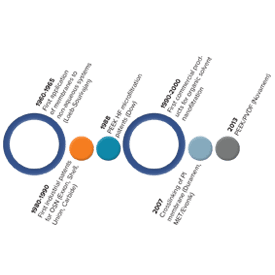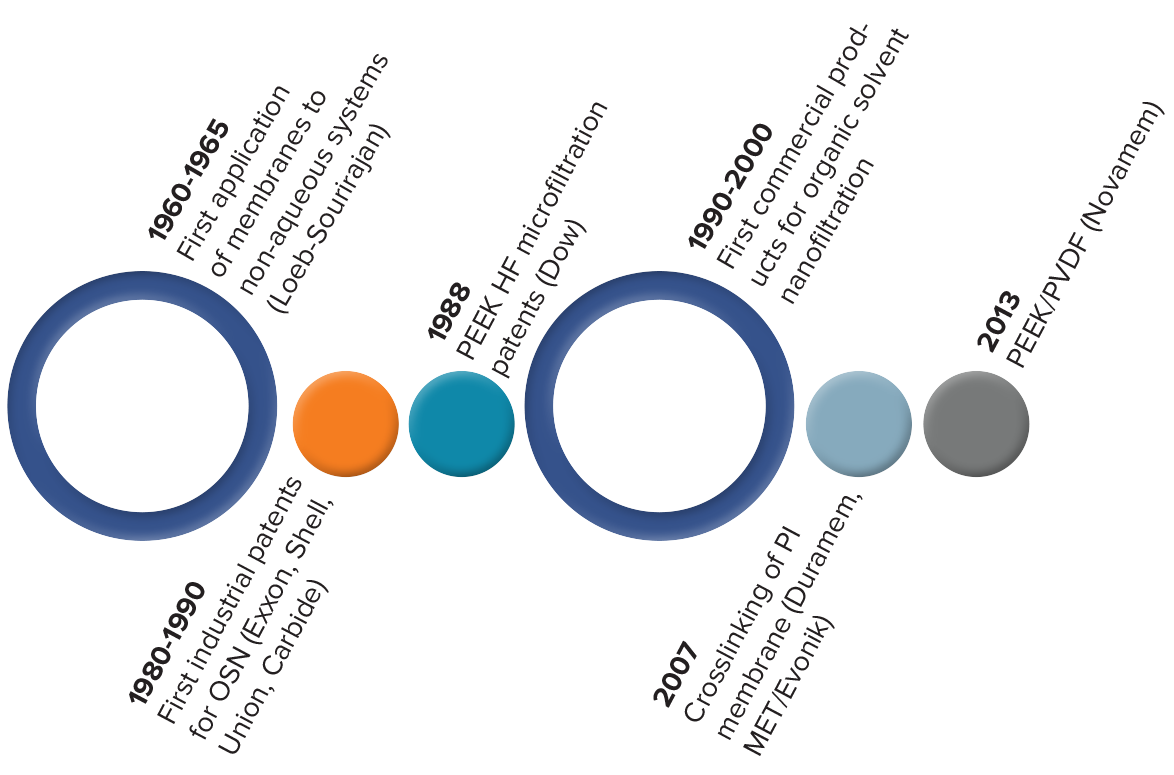
The use of polymeric membranes for filtration of non-aqueous solutions started around 1960 and has been developed significantly since then [1]. Today, non-aqueous membrane filtration applications in chemical and pharmaceutical processing account for more than 25% of the global total polymeric membrane market [2].
To put into perspective the potential significance of membrane filtration for non-aqueous solutions, one must realize that conventional separation processes still accounts for up to 70% of capital (CAPEX) and operational (OPEX) expenditures in the chemical and pharmaceutical industries [2,3]. Therefore, to reduce CAPEX and OPEX, developing membrane separation processes that can be more efficient and cost effective than conventional separation processes has been of great interest for these industries and a growing field of research.
Sterlitech has observed this growing demand from the research community for solvent resistant membranes that can be used in non-aqueous separation processes. These membranes are generally required to withstand use in harsh environments containing organic solvents that are often at elevated temperatures. To meet this demand, Novamem and Evonik membranes were strategically added to Sterlitech’s product offerings. Novamem membranes primarily in the range of microfiltration, are made of chemically resistant polyether ether ketone (PEEK) or polyvinylidene difluoride (PVDF), and can be operated up to 120-180°C. Evonik membranes, primarily in the range of nanofiltration, are made of modified polyimide, and are commonly used for organic solvent nanofiltration (OSN) applications.

| Membrane Product | Evonik: PuraMem and DuraMem | Novamem: PEEK | Novamem: PVDF |
| Applications and Specifications |
|
|
|
To learn more about the availability, technical specifications, and applications of these membranes, please visit https://www.sterlitech.com/chemically-resistant-membranes.html or contact a membrane process specialist at Sterlitech: E: [email protected] or T: 253.437.0844.
References:
[1] https://pubs.acs.org/doi/abs/10.1021/cr500006j
[2] Membranes Market by Type (Polymeric membranes, Ceramic membranes, and others), by Technology (MF, RO, UF, Pervaporation, Gas Separation, Dialysis, NF, and Others), by Region (North America, Europe, Asia-Pacific, the Middle East & Africa, and Latin America), and by Application - Global Forecast to 2020 (October 2015), Market and Market, Report Code: CH 2635
[3] Global Water Market 2017 (April 2016) Global Water Intelligence


![Join Sterlitech at BIO 2024 [Booth #5558]: Exploring the Future of Biotechnology](https://www.sterlitech.com/media/magefan_blog/b4.jpeg)

